Subgrade
NOTE: As of September 23, 2009, this post has been edited in
accordance with a court-mediated settlement. The names of the
contractor and his excavation subcontractor have been replaced with
pseudonyms.
Just after breakfast, we heard the familiar sound of a diesel engine being started up under the house. Rosie and I went to the back door to investigate:
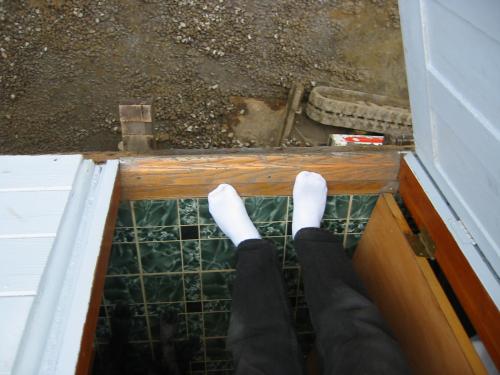
Surprise! We saw the contractors moving dirt and gravel with the small "bobcat:"
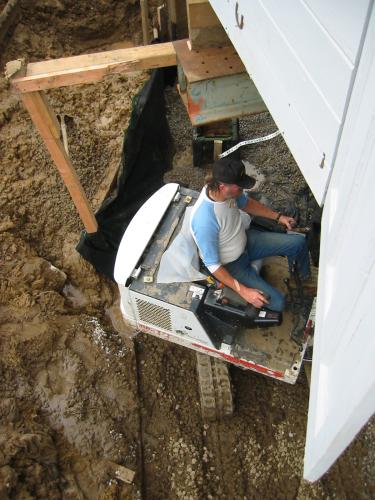
Walking around the side of the house, we were presented with this vista (OK, I admit I'm reaching here calling it a "vista," but we did see the following):
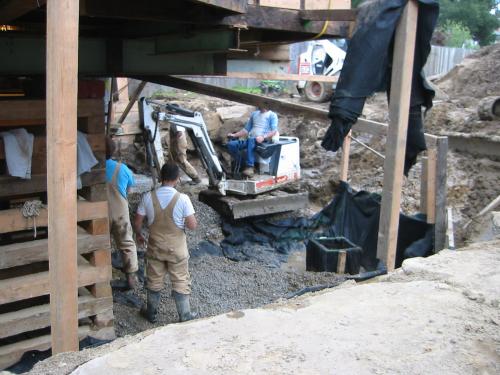
By the time we got outside, they'd already dug another hole for the next sump, installed the sump box, and spread geotextile fabric around it. The "bobcat" operator was busy scooping up gravel and spreading it over the fabric. The contractors have been performing those operations for the past three days over the whole area under the house. There are two goals in doing this: to provide a nice, level surface on which footings can be poured; and to engineer a stratum that will drain rapidly into the final sump well (once installed).
At one corner, they've formed up one edge of the foundation and installed drain pipe. People, I think, refer to this configuration as a "french drain" -- the pipe is at the bottom, geotextile fabric covers the pipe, gravel covers both:
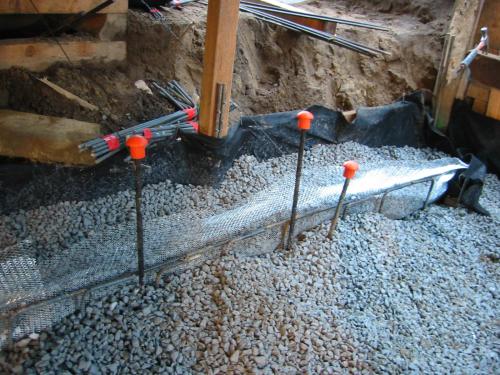
It's really starting to look like a basement down there. In this picture, I'm standing on the gravel, looking up at our subpanel:
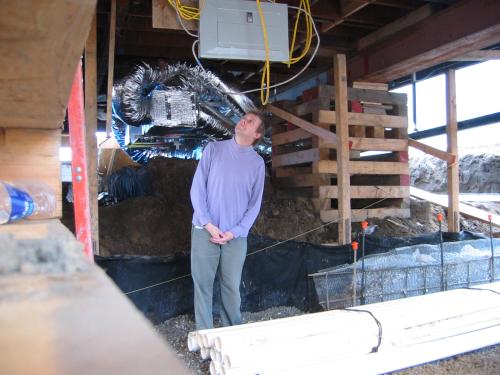
Here's another look toward the water heater. It's not quite as far off the ground as the other day, now that the gravel has been placed under it. However, it's still a good four feet off the ground:
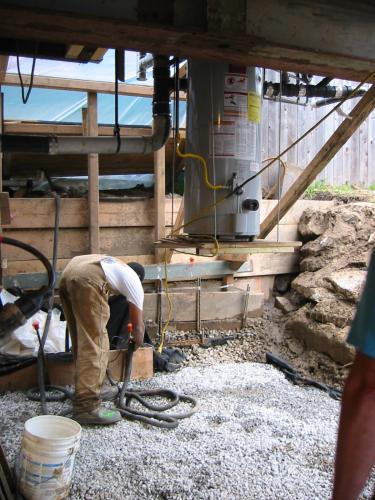
You may be wondering how one levels a large patch of gravel like this. Simple: use a tool. Contractor A (who was in the process of trying desperately to hide the extensive damage he had done to the soil under our house) here is pictured with a length of wood that is nine feet tall. To check the distance from bottom of joist to top of gravel, he places one end of the wood on the bottom of the joist and pivots the wood around to make sure none of the gravel comes in contact with the bottom of the wood:
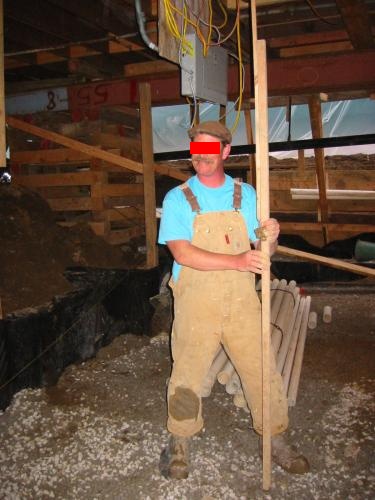
Contractor A (who at this point still has not told us there is a problem under our house, though he lied under oath in his deposition and claimed he had done) thinks that they'll be completely done with the digging tomorrow. While he's said that before, I think I believe him this time -- the only thing left to do is remove some bits of concrete which had been temporarily used to prevent one face of the hole from slumping into the basement. That means the digging machines will finally leave us. That'll mean a bit more peace and quiet for the neighbors.
posted by noel on 03/03/05